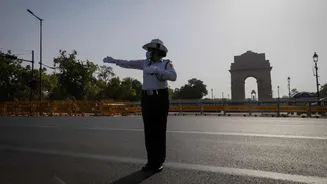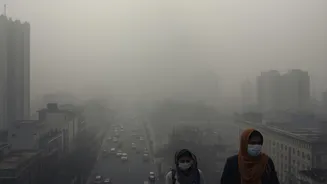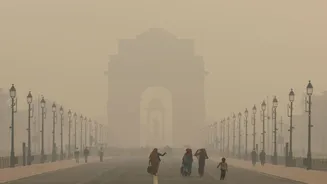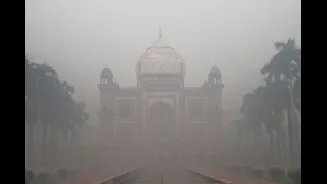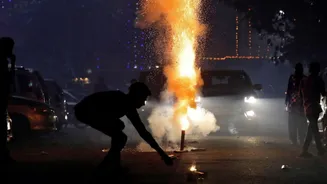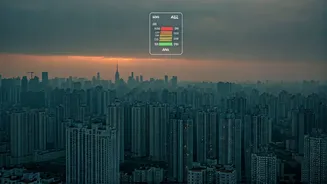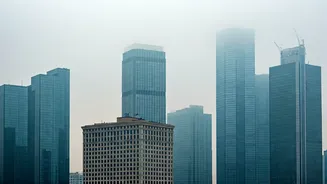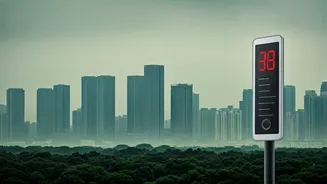“At 9 a.m. we noticed more than two dozen vehicles stacked up,” said the traffic constable not wishing to be quoted.
Traffic police officer, directing traffic at the busy junction. “Almost half of them had no valid PUC; in line with the order from the CAQM, we issued fines and towed two cars already burdening the traffic lane.”
What triggered this strict enforcement?
On 19 October 2025, the Commission for Air Quality Management (CAQM) issued a formal order (No. 120017/27/GRAP/2021) invoking Stage-II of the Graded Response Action Plan (GRAP) for the entire National Capital Region (NCR). The decision was taken after Delhi’s Air Quality Index (AQI) surged past 300—specifically, it hit 296 at 4 p.m. and 302 at 7 p.m. on the same day.
Under Stage-II (which corresponds to “Very Poor” air quality, AQI 301-400), the CAQM activated a 12-point action plan that supplements measures already in place under Stage I.
Key measures include enhanced dust-control efforts (vacuum sweeping, water-sprinkling roads), stricter regulation of DG sets, discouraging private vehicle use (via higher parking fees), monitoring of heavy-traffic corridors and construction/demolition (C&D) sites, and increasing public-transport services.
On-ground enforcement: focus on vehicles
While the official order doesn’t specifically mention impounding private vehicles with lapsed PUC—which is under the purview of vehicular-emissions and transport authorities—traffic personnel in Delhi this morning have interpreted the crackdown as part of the broader enforcement mood under Stage II.
At the Rajghat check-point:
- Car registration number of each vehicle stopping at the red light was being checked; no wide sluice of “just passing through”.
- PUC certificate validity was checked on the online system which was logged in by traffic constables on their mobile phones; several vehicles failed to present valid certificates.
- Drivers of two cars were told their vehicles would be impounded until a valid PUC is produced and fine paid.
- The traffic flow was slower than usual, as additional manpower was deployed to monitor consecutive traffic lights rather than just one.
One driver, Anita (name changed), said: “I had delayed checking my PUC because of work, and today just I got stopped. They told me unless PUC is shown, car remains here. I had to call for ride home.”
Wider implications for motorists
For motorists in Delhi today:
- Having a valid PUC certificate is crucial; penalties are likely to be heavier if caught during this Stage II enforcement period.
- Even though the order doesn’t name “impoundment at traffic signals” explicitly, the current environment suggests vehicles with lapsed PUC are being treated more strictly.
- With dust control and traffic-flow measures stepping up (water sprinkling, vacuum sweeping, extra traffic staff), delays are more probable—commuters are advised to plan extra time.
Why now, and for how long?
The timing of Stage II has raised eyebrows: the order came just ahead of the Diwali festivities when pollution from fireworks, stubble burning in neighbouring states, lower wind speeds and cooler temperatures are expected to converge.
The CAQM has emphasised that implementation will be reviewed regularly, and that the agencies concerned must monitor, implement and report actions under both Stage I and Stage II.
What to watch
- Will traffic police across other signals replicate the same approach (noting, PUC check, impoundment)?
- Whether the AQI remains in the 300+ “Very Poor” bracket or recedes, which may trigger either continuation or escalation (to Stage III) of GRAP measures.
Bottom line
The city’s vehicles are under heightened scrutiny. With the CAQM’s Stage-II GRAP order in effect, Delhi’s traffic police are not just checking compliance—they’re enforcing it with visible action. If your PUC certificate is lapsed, this is not the time to ignore it.
